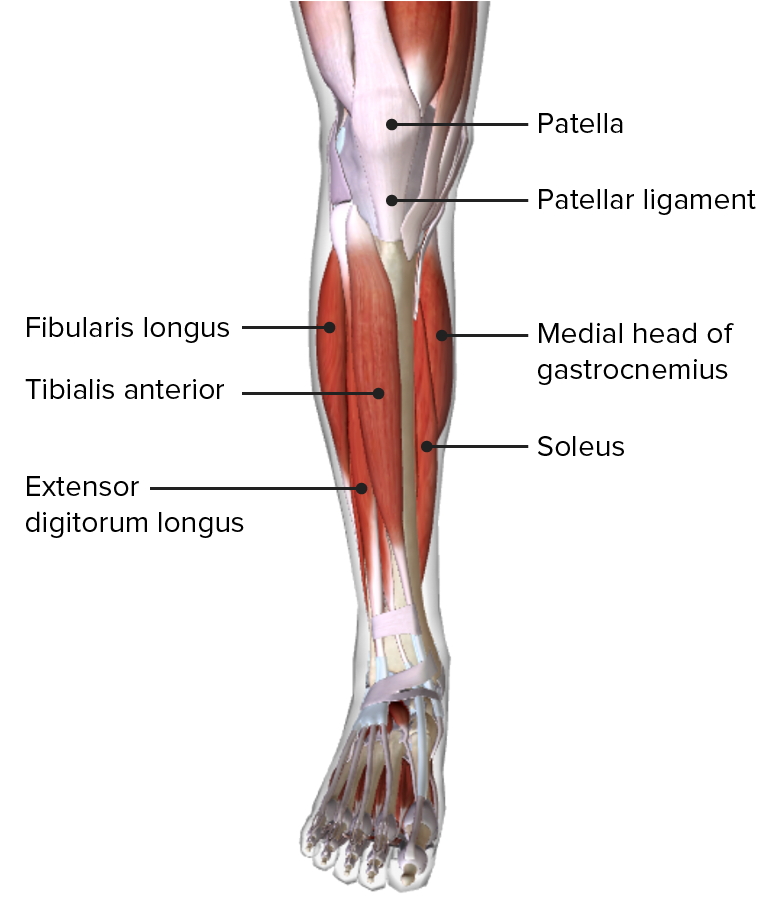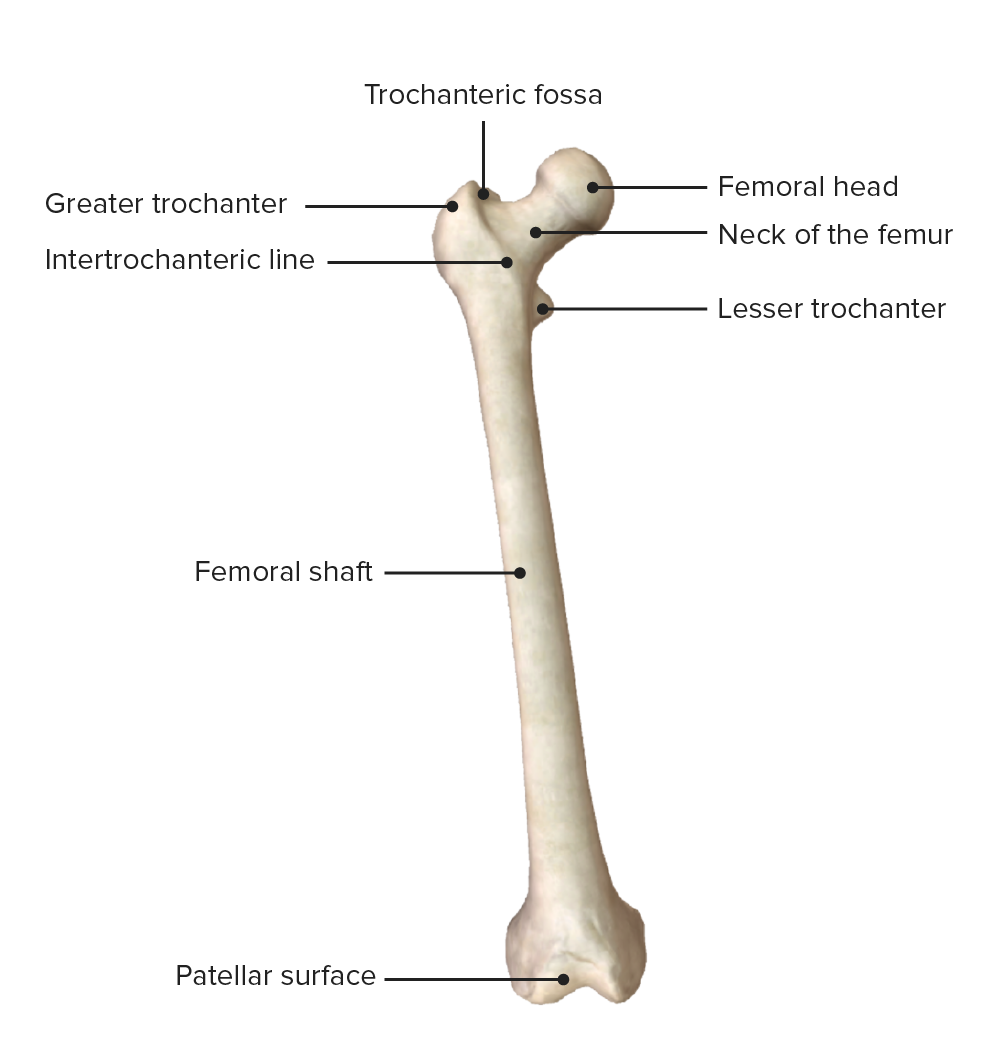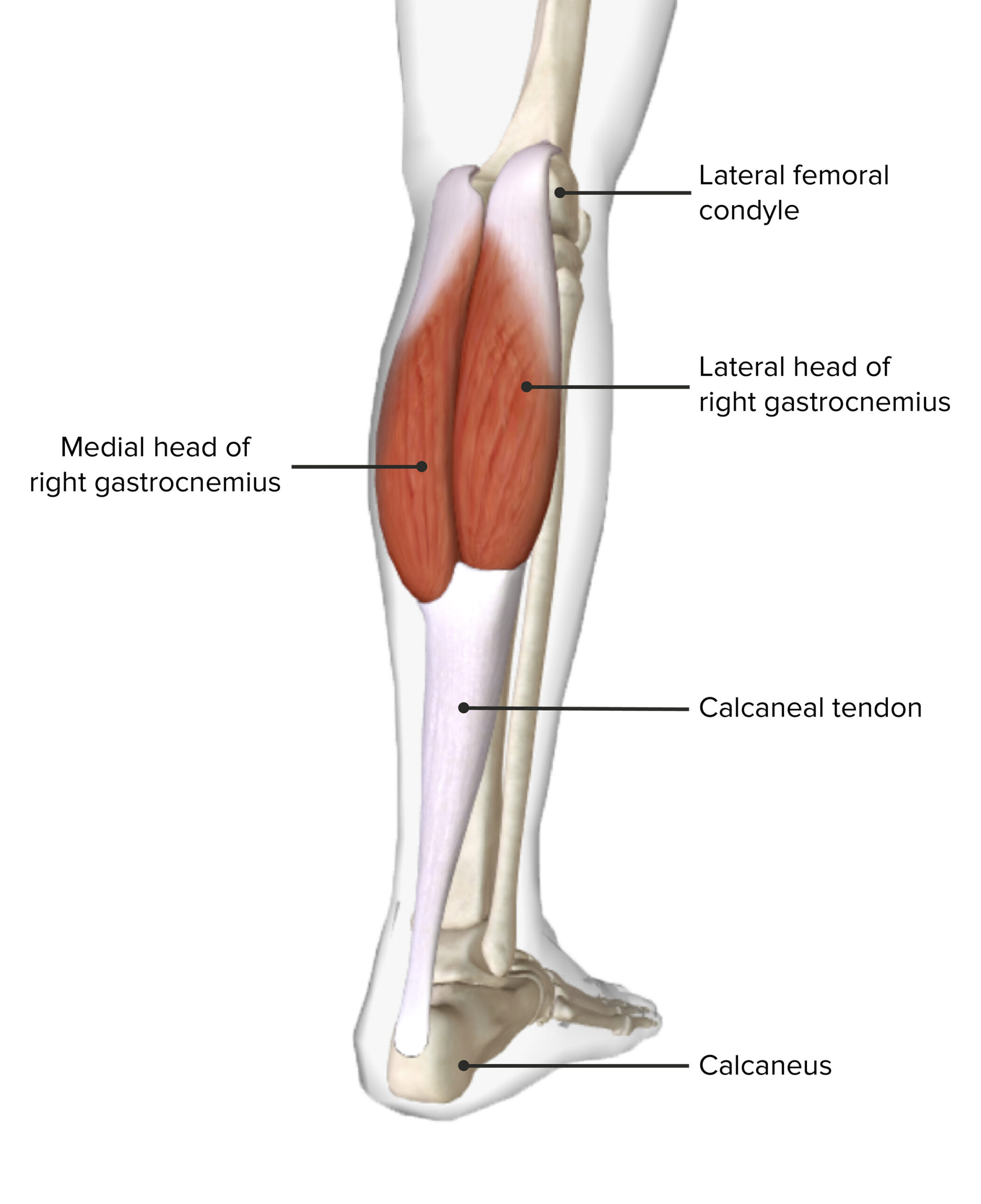Playlist
Show Playlist
Hide Playlist
Sciatic Nerve
-
Slide Sciatic Nerve.pdf
-
Download Lecture Overview
00:01 So now let's turn our attention to the sciatic nerve. 00:05 The sciatic nerve is coming from L4 to S3. 00:08 You can see it here passing away from the spinal cord at that region. 00:13 It's a very substantial nerve. 00:15 It passes out to the pelvis by passing through the greater sciatic foramen, So here we can see the sciatic nerve now having passed through the greater sciatic foramen, it sits underneath piriformis does then descend down the posterior aspect of the thigh. 00:31 So here, we can see it leaving the greater sciatic foramen through that infrapiriformis foramen, so it's leaving underneath piriformis. 00:39 It then run superficial to those short muscles we spoke about earlier. 00:43 So the superior and inferior gemelli and then it runs down the posterior aspect of the thigh. 00:49 We can pick the sciatic nerve up here, we can see in the posterior aspect of the thigh. 00:54 It gives branches to the biceps femoris muscle, we can see the long head has been removed here. 01:00 And it's also giving branches to adductor Magnus, semi tendinosis and semimembranosus and then it runs down and gives off its terminal branches within the popliteal fossa. 01:10 We'll look at those in a moment or two. 01:13 So now we are in the level of the popliteal fossa. 01:16 We can see the sciatic nerve as run distally into this space. 01:19 And here we can see it gives rise to two important nerves, the common fibular nerve that runs laterally towards the fibular, it will run around the neck of the fibular, and then descending more on the midline of the popliteal fossa. 01:32 We have the tibial nerve. 01:34 So to remind ourselves in this space, the sciatic nerve is running posteriorly down the thigh and it supplies semimembranosus, semi tendinosis and biceps femoris. 01:44 It also supplies the medial part of adductor Magnus. 01:49 So injuries to the sciatic nerve can occur typically around posterior dislocation of the hip. 01:55 As the sciatic nerve is positioned within the posterior aspect of the gluteal region, posterior dislocation of the hips moving posteriorly can also cause it to be affected. 02:06 We have piriformis syndrome, we have external compression, e.g., if you're particularly immobile patient that sits on their gluteal region for a sustained period of time, this can lead to compression of the sciatic nerve. 02:19 You can also have hydrogenic causes a misplaced intramuscular injection, which can hit onto the sciatic nerve. 02:26 So intramuscular injections of the gluteal region should be really in the superior lateral quadrant of the gluteal muscle. 02:34 So if the sciatic nerve was to be compressed or damaged in any one of those places, you'd expect to see paralysis of the hamstrings. 02:42 So severe impairment in knee flexion and thigh extension. 02:46 You'd also have paralysis of all the muscles of the leg and foot because these are supplied by the terminal branches of the sciatic nerve and you will result in foot drop. 02:56 So now let's returned to the sciatic nerve and one of its two terminal branches. 03:01 So if you remember at the level of the popliteal fossa, the sciatic nerve bifurcated into the tibial and the common fibular nerve. 03:09 Now let's have a look at the common fibular nerve. 03:11 It's coming away from L4, S2, so they're the spinal cord segments that contribute to it. 03:16 And we can see here, the common fibular nerve as it causes laterally heading towards the fibular, it itself bifurcates into a superficial fibular nerve and also a deep fibular nerve and these are important. 03:29 The superficial fibular nerve goes on to supply the lateral compartment of the leg. 03:34 So it supplies fibularis, longus and brevis with motor fibers. 03:39 It also gives rise to cutaneous innervation to that lateral part of the leg, and also the dorsum of the foot. 03:47 That's the superficial fibular nerve. 03:49 The deep fibular nerve as its name supplies actually runs deeper, but approaches the leg from this lateral aspect. 03:56 And here the deep fibular nerve supplies the anterior compartment of the leg. 04:00 So if you remember, you've got those three compartments of the leg, anterior, lateral, and posterior. 04:06 So here we've got the deep fibular nerve now supplying the muscles in the anterior compartment. 04:11 It also continues down and supplies muscles in the dorsal compartment of the foot as well. 04:17 It has a cutaneous branch as well. 04:19 And that goes on to supply the space between the great and second toes again, on the dorsum of the foot. 04:26 The common fibular nerve, if it's injured, can actually be caused maybe by a fracture of the fibular neck, or entrapment due to leg casts or splints, so compression or damage via fracture to the common fibular nerve. 04:42 This would lead to paralysis of the muscles of in both the anterior and lateral compartment. 04:47 And you'd also therefore have foot drop because she wouldn't have an ability to dorsiflex the foot. 04:53 So now let's turn to the second terminal branch from the sciatic nerve, the tibial nerve. 04:58 This one's coming from L4, S3, so spinal cord segments, L4, S3 contribute to the tibial nerve, and this one runs very much in the midline, down through the leg and we can see here the tibial nerve goes on to supply muscles of the superficial posterior compartment. 05:15 It also supplies muscles to the deep posterior compartment and we can see this as its motor innovation here. 05:22 So muscles of both the deep and the superficial compartment. 05:25 Muscles hear superficially like gastrocnemias and soleus. 05:28 And then muscles in the deeper compartment, which you can remind yourselves off from previous lecture. 05:33 Things like tibialis posterior, for example. 05:37 It also passes then underneath the flexor retinaculum, around the ankle to go on to supply muscles in the sole of the foot. 05:45 And here we can see some terminal branches of the tibial nerve, here on the plantar surface or the sole of the foot. 05:51 And we can see we have a medial and lateral plantar nerves. 05:55 These are passing along the sole of the foot and supplying the musculature on that sole of the foot. 06:02 They give rise to various common plants or digital nerves that go and help supply the musculature around that region. 06:08 For example, here we can see a substantial one, the lateral proper plants a digital nerve, and these go on carrying on giving away digital nerves that go to supply the skin and the muscles around this region. 06:20 This same occurs on the medial side and here, we can see the medial proper plantar digital nerve. 06:25 But essentially coming away, we've got the medial and the lateral plantar nerves, and they give rise to a network of motor and cutaneous nerves that go to supply the sole of the foot. 06:37 We also have here running a sural nerve, and the sural nerve is very much a cutaneous nerve that's coming away from the tibial nerve. 06:44 So here we can see the middle school cutaneous nerve passing in close proximity to the common fibular nerve here where there may be some interaction between the two. 06:54 So contributions to the sural nerve from both the tibial and the common fibular, but there may be some variation within this space. 07:01 Here we can also see an additional lateral sural cutaneous nerve as well. 07:06 The sural nerve then extends all the way down and provide sensory information to the postural lateral aspects of the leg. 07:14 Injury to this nerve is quite rare because of its deep location within the popliteal fossa. 07:19 But if it wants to be injured, you would have paralysis of the associated muscles within the leg and the sole. 07:25 And you'd also have weaker flexion of the knee joint because of his interaction with plantaris. 07:31 You'd have loss of plantar flexion and you'd have an inability to flex the toes.
About the Lecture
The lecture Sciatic Nerve by James Pickering, PhD is from the course Fasciae and Neurovasculature of the Lower Limbs.
Included Quiz Questions
What is a common mechanism of injury to the sciatic nerve?
- Posterior dislocation of the hip
- Anterior dislocation of the hip
- Internal compression
- Gluteal syndrome
- Semimembranosus tear
What are the consequences of sciatic nerve injury? Select all that apply.
- Impairment in knee flexion
- Impairment in thigh extension
- Impairment in hip abduction
- Impairment in hip adduction
- Impairment in internal rotation of the thigh
What is a common mechanism of injury of the common fibular nerve?
- Fracture of fibular neck
- Fracture of fibular body
- Piriformis syndrome
- Iatrogenic
- Fracture of tibial body
Why is injury to the tibial nerve rare?
- Deep position in the popliteal fossa
- Protective sheath
- Deep position in the flexor retinaculum
- Deep to the soleus
- Regenerative capability
From which spinal nerve roots does the sciatic nerve originate?
- L4-S3
- L4-S5
- L4-S4
- L1-S5
- S1-S5
What are the two terminal branches of the sciatic nerve?
- Common fibular nerve
- Tibial nerve
- Common tibial nerve
- Tibular nerve
- Dorsalis pedis nerve
From which spinal nerves does the tibial nerve originate?
- L4-S3
- L4-S2
- L5-S1
- S1-S2
- S1-S4
Customer reviews
5,0 of 5 stars
| 5 Stars |
|
5 |
| 4 Stars |
|
0 |
| 3 Stars |
|
0 |
| 2 Stars |
|
0 |
| 1 Star |
|
0 |








